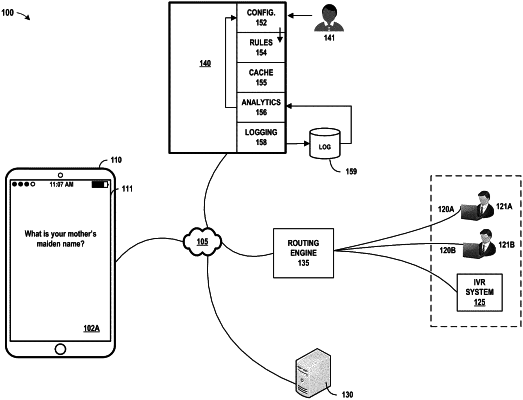| CPC H04L 9/3213 (2013.01) [G06F 21/62 (2013.01); H04L 9/3271 (2013.01); H04L 63/0861 (2013.01); H04L 63/102 (2013.01); H04L 63/308 (2013.01)] | 20 Claims |

|
1. A computing system comprising processing circuitry and a storage device, wherein the processing circuitry has access to the storage device and is configured to:
receive, over a network, a request to gain access to an account maintained by an organization for a user;
select, from a plurality of authentication tokens associated with the account and based on interaction information associated with the account, an authentication token to be used in an authentication procedure in response to the request to gain access, wherein each of the plurality of authentication tokens is information that is expected to be known by the user of the account, wherein the interaction information includes information about prior authentication tokens used during a plurality of interactions associated with the account and information about a frequency of the interactions, and wherein the selected authentication token is different than the prior authentication tokens used during the plurality of interactions;
present a prompt for the selected authentication token; and
determine, based on information received in response to presenting the prompt, whether to grant the request to authenticate.
|